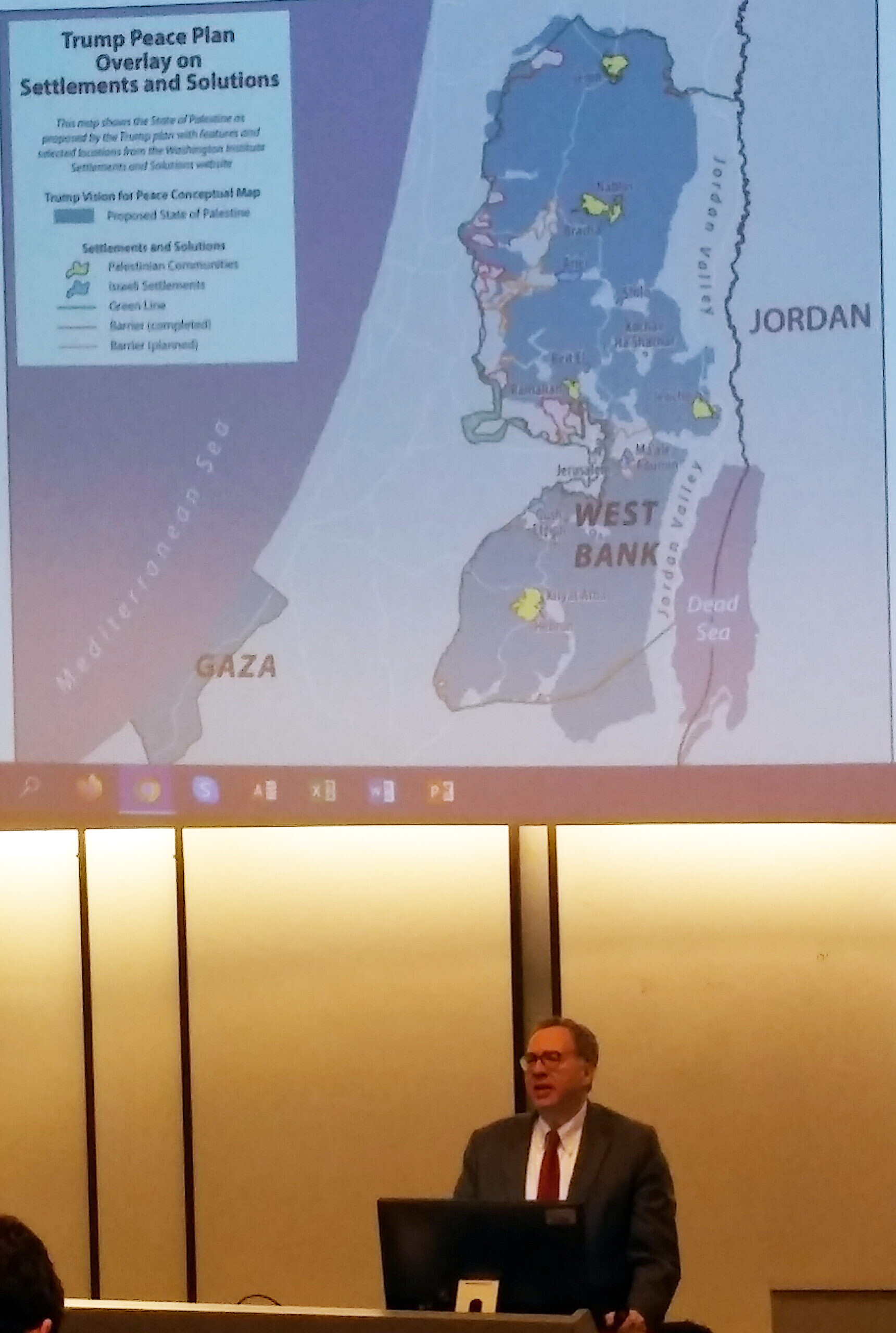Trump Proposal Follows Several Failed Peace Plans
Eli Sperling is not optimistic that the Trump plan will move forward any more than the other plans that have landed in the “trash bin of history.”

Despite some confusion and contradictory concerns about President Donald Trump’s “Vision to Improve the Lives of the Palestinian and Israeli People,” it’s clear that the plan “fits into the trajectory” of previous plans. That’s the observation of Eli Sperling, senior academic research coordinator and lecturer at the Institute for the Study of Modern Israel at Emory University.
Starting with the November 1947 U.N. Resolution 181, known as the Partition Plan, and continuing with Camp David in 1978, the 1993 Oslo Accords, the 2000 Clinton Parameters, the Bush Road Map of 2003, the Annapolis Conference in 2007 and the 2014 Kerry Initiative, this latest plan “fits into the two-state solution. That’s been in all the frameworks for negotiation,” Sperling said.
With each plan, however, implementation would result in the Palestinians receiving less territory for their state, he said.
In 2000, the Clinton parameters that were negotiated between then President Bill Clinton, then Israeli Prime Minister Ehud Barak and the late Palestinian leader Yassir Arafat, “were a pretty good deal, but not as good as 1947. Still, 2000 would have been a great opportunity to get a good piece of land,” Sperling stated.
But he’s not optimistic that the Trump plan will move forward any more than the other plans that have landed in the “trash bin of history.”
David Makovsky, director of the Project on Arab-Israel Relations at The Washington Institute, compared the latest vision plan for the Middle East. “Ma Nishtana,” paraphrasing the “Four Questions” reading from the Passover hagaddah, as if to say, why is this plan different from all other plans?

Makovsky would know. He was in Atlanta earlier this month to speak to Emory students and promote his latest book on Israel, co-authored with American diplomat Dennis Ross. Makovsky worked closely on the peace initiative of former Secretary of State John Kerry. He suggested that Trump’s plan “may be an effort to signal to the Palestinians that time isn’t on their side.” He pointed out that Oslo would have netted the Palestinians 97 to 100 percent of the West Bank with land swaps, while the latest plan might result in 70 percent of the territory going to a potential Palestinian state.
“The starting point for this plan flows from making sure no settlers get moved” from their homes in the West Bank, Makovsky said. The Palestinians, he said, may just give up and ask for the right to vote, resulting in Israel becoming a binational state. “I’m a skeptic, given the gaps” between the two sides.

Likewise, Nachman Shai, visiting professor at ISMI and former member of the Israeli legislature or Knesset, believes there’s a “small chance” the latest plan will be implemented “because the Palestinians will not enter negotiations and the Arab states won’t push the Palestinians to negotiate.” Shai contends that the Palestinians should respond to Trump’s proposal by saying, “yes, but.” He acknowledged that it “wouldn’t be a strong state.”
Shai explained, “From the perspective of the Palestinians, they are losing. While they’ve been saying ‘no,’ a half million Jews have moved to the West Bank. It’s easy, comfortable and not expensive to live there, and once there, they have become right wing. There are now facts on the ground. The Palestinians should recognize things have changed.”
Shai told the AJT that he’s long been a supporter of two states for two peoples. “There’s no other way for Israel as a Jewish and democratic state. Even this [Trump] administration supports it. It’s the only viable solution. I don’t see how Israel can continue to control millions of people. This was and is my political view.”
From 2009 to April 2019, Shai served in the Knesset, representing the Kadima, Labor and Zionist Union parties. As an observer now, he doesn’t think Trump’s proposal will have any effect on Israeli voters as they head to the polls March 2, the third attempt in less than one year to conclude with a majority government. “There’s no change in the division between left and right,” Shai said. “We may be heading for a fourth run.”
According to the Israeli Voice Index for January 2020, published in early February by the Israel Democracy Institute, half of the Israeli public believes that by announcing the plan when it did, the United States meddled in the Israeli elections to assist Prime Minister Benjamin Netanyahu’s chances of forming a government after the elections.
However, the intervention might not help Netanyahu, according to the monthly survey conducted by IDI’s Guttman Center for Public Opinion and Policy Research. Rather, the fact that Netanyahu was formally indicted last month in three corruption cases is expected to have the greatest impact on voters in the March election – despite the fact that a trial date may not be set until after the election.
Indeed, a third of Israelis believe Netanyahu’s legal issues will most influence the vote, according to the IDI, followed by 21 percent who believe the main issue will be the cost of living and housing, followed by security at 18 percent, religion and state issues at 10 percent and Jewish-Arab relations at only 7 percent. By contrast, 1 ½ months before the April 2019 elections, security concerns are expected to have the greatest impact on the vote.

The reaction to the Trump proposal in the American Jewish community, is “unfortunately falling along party lines,” said Dov Wilker, regional director of the American Jewish Committee. “Unfortunately, the American Jewish community is missing the bigger picture and not through the realities of the Israeli political system.” He suggested that the plan should be viewed through a Middle East regional lens in which this plan may bring Israel closer to some of its Arab neighbors.



comments